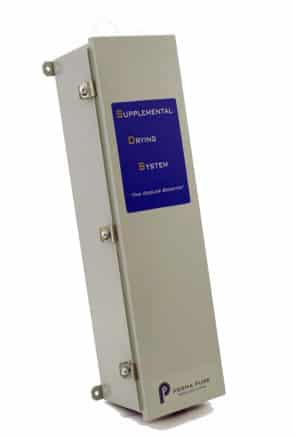Increase Cooler System Reliability and Protect Your Analyzer with the SDS Supplemental Drying System
The SDS™ -Series Supplemental Drying Systems from Perma Pure provide a boost to an existing gas sample conditioning system. The SDS will reduce the dew point of the sample from +4°C down below -15°C, reducing the total moisture content by an additional 80%. Reducing the gas sample dew point is essential in order to eliminate the formation of acid mists. Rather than replace an existing cooler with a “super” cooler, the SDS is a cost effective way of extending the life and improving the performance of your existing sample conditioning system.
- Eliminates formation of acid mists
- Selective membrane technology removes only water vapor
- Single or dual sample streams
- Improves chiller performance
- Corrosion resistant
- Improves sensitivity of IR measurements
Infrared analysis of CO and SO2 is very susceptible to moisture interference, as are measurements of low ppm concentrations of NOx and H2S. It is desirable to remove as much moisture as possible. In these applications, installing the SDS downstream of your conditioning system is an effective and less expensive alternative to a complex subzero cooler.
Principle of Operation
Proven tube-in-shell membrane technology is the basis of the SDS-Series drying system, which selectively removes water vapor from a gas stream. The driving force is the vapor pressure differential between the sample gas and a purge gas counterflowed outside the tubing. This difference drives the reaction, quickly drying the gas stream. The SDS-Series drying system is designed as an add on to an existing conditioning system. It can also be used as the primary gas drying device, provided the sample is non-condensing at ambient temperature. It is equipped with 4 mounting holes and 1/4” compression gas connection fittings. The inlet gas stream should be non-condensing at ambient conditions. The system requires a purge gas supply of 2 times the sample flow rate. The SDS can handle one stream of up to 10 lpm, or two streams of up to 5 lpm each.

